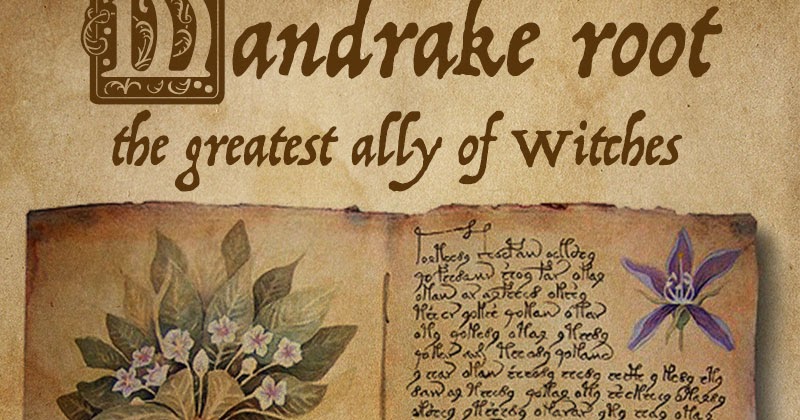


While the mandrake grew naturally in the Mediterranean region, distribution spread through the Northern, Eastern, and Western European countries over time. Not only did the common people and royalty use it, but so did accused witches during the Dark Ages.

The mandrake root has a long history in witchcraft. I’ve confirmed one can purchase the alraun in Germany today, and that it’s used in the same manner as it was centuries ago. The remnants of the washing liquid would be sprinkled around the house as a protective ward. The alraun was taken out and carefully bathed in wine or brandy four times a year. They treated the alraun with great respect – by wrapping it in silk and preserving it in a box. It was a powerful amulet to these families. There are stories about the alraun being dug up, sold for lots of money, and kept in families to be passed down through generations. The mandrake plant is called the alraun in Germany, dating back to the Medieval Ages. The mandrake being pulled from the ground. She employed toxins in her practice to control wicked men, turning them into animals and keeping them as servants in her house on a mystical island known as Aeaea. She’s mentioned in Homer’s Odyssey, and was skilled in herbalism, particularly poisonous herbs like the mandrake. Circe is an ancient Greek goddess known for her transformation abilities. The mandrake is also called the Drug of Circe. The root can grow up to two feet long, so maybe both assumptions were correct. Some say the root was carved to look more like a human shape, while others claim they come out of the ground looking human-like. The magical plant was then sold for a high price. This consequently killed the animal and not the human. It was thought the mandrake “screams” when uprooted, and so people would tie a rope to an animal and then to the plant and allow the animal to pull the plant up. The Deadly Scream of the MandrakeĪncient legend tells us to pull up a mandrake root leads to sickness and/or immediate death. Others claim use of the mandrake as an aphrodisiac (as mentioned in the book of Genesis in the story of Leah and Rachel), and also as a protective amulet against evil spirits. Some claimed to have used the mandrake plant to put their patients in a sedated state for surgeries or to relieve pain. In ancient Middle East, this magical plant was used for medicinal and magical purposes.

The mandrake root is viewed as dangerous and potentially evil in the modern Middle East. Modern Arabs know the mandrake root as Beid el Jinn, which means Eggs of the Jinn (the Jinn are dangerous spirits in Islamic mythology). The mandrake is mentioned in the Bible: three times in Genesis and once in Songs of Solomon.
Mandrake symbolism series#
The Mandrake’s cry is fatal to anyone who hears it.” ~ Hermione quote from the Harry Potter Series The Mandrake Root’s Ancient History “ Mandrake or Mandragora is used to return those who have been petrified to their original state. If ingested, the mandrake causes one to stop breathing and die at worst, at best it causes profuse vomiting and diarrhea. This magical plant is found in Southern European countries like Italy and Spain but is also in North African countries like Morocco and Tunisia. The mandrake root’s toxicity is due to the chemicals inherent in the entire plant, mostly the stem and leaves: anticholinergics, hallucinogenics, and psychotic alkaloids. The root of the plant itself takes on strange human-like characteristics, hence the name man-drake. The mandrake root produces berries yellow to reddish and look similar to tomatoes. The leaves resemble a cabbage or edible green, but they are not edible! The flowers range in color from white to purple and have a similarity to Belladonna blooms. Mandrake is a perennial with a long stem and short trunk. Its scientific name is Mandragora officinarum, and it grows mainly in countries near the Mediterranean Sea. The mandrake root is a plant in the nightshade family rich in folklore and history. We examine the mandrake root’s magical uses, it’s intriguing history and folklore from around the world. In this article, we take a look at one of world’s most famous magical plants – the mandrake root.


 0 kommentar(er)
0 kommentar(er)
